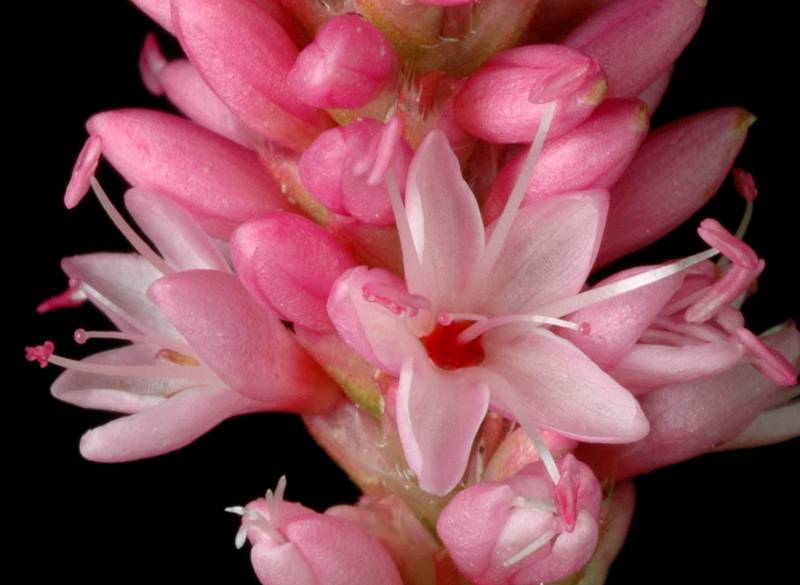Hosted by the University of Washington Herbarium, Burke Museum
Publication: Nat. Arr. Brit. Pl. 2: 268. 1821.
Origin: Native
Herbarium search: CPNWH
Notes: FNA5: "Persicaria amphibia is widespread in the Northern Hemisphere and naturalized in Mexico, South America, and southern Africa. It is highly polymorphic and the most hydrophytic of the native North American smartweeds (R. S. Mitchell 1976). In recent decades, botanists have tended to follow Mitchell (1968) in recognizing two endemic, intergrading North American varieties. Studies by G. Turesson (1961) and Mitchell (1968, 1976) have shown that phenotypic extremes in the species are part of a cline of nearly continuous morphological variation that is strongly correlated with submergence, but also with some genetic integrity. Formal recognition of varieties is even less tenable when Eurasian elements also are considered.
Aquatic-adapted plants, which bloom in water or are sometimes stranded on land, have been called var. stipulacea (although that epithet may not be the oldest one available for the taxon). They produce ovoid-conic to short-cylindric inflorescences 10-40(-60) mm, prostrate aerial stems, and leaf blades that are glabrous with acute to rounded apices. Terrestrial forms of this ecotype usually are spreading-pubescent and often bear ocreae that are foliaceous, green, and flared distally, characters found only in North American plants (R. S. Mitchell 1968).
Terrestrial-adapted plants, referred to var. emersa, bloom on moist soil and produce short- to elongate-cylindric inflorescences 40-110(-150) mm, spreading or erect aerial stems, and leaf blades that are appressed-pubescent with acute to acuminate apices. They produce ocreae that are entirely chartaceous and not flared distally. Emergent and terrestrial plants of this ecotype exhibit less phenotypic plasticity and a lower frequency of heterostyly than do plants of the aquatic ecotype (R. S. Mitchell 1968).
R. S. Mitchell and J. K. Dean (1978) and H. R. Hinds (2000) recognized var. amphibia, the Eurasian element, as introduced in New York and New Brunswick, respectively. These plants are morphologically intermediate between the North American ecotypes and often indistinguishable from North American plants (Mitchell and Dean)."
Last updated 10/2/2020 by David Giblin.

